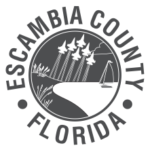
Media Contact: Logan McDonald
Phone: (850) 595-1479
Email: [email protected]
The Pensacola & Perdido Bays Estuary Program is pleased to announce the completion of the first ever State of the Bays Report for the Pensacola and Perdido Bay Watersheds.
Just like people need health checkups, so do our waters. The State of the Bays Report provides a snapshot of key ecosystem health metrics for the Pensacola and Perdido Bay Systems. The report will allow the community to determine if our waters are improving or declining and identify areas where more information is needed to evaluate conditions. If a declining condition is identified in the future, these data provide the opportunity to take corrective action before reaching a critical condition.
The report is intended to serve as a centralized source of information for the public to learn more about the condition of our local waters. The web platform provides summary data such as graphs and maps on key indicators such as habitats, water quality, bacteria, and wildlife. These ecosystem indicators are ranked with a scale of ecosystem health of improving, stable, declining, critical, or undetermined. Historical information, potential causes, recent trends, solutions, and actions the public can take are provided for each indicator.
The State of the Bays Report will be updated every two years and future versions will include additional metrics such as fisheries data as additional monitoring is completed. The State of the Bays Report is available at https://www.stateofthebays.org/
Key findings from the report include:
- Oysters are in critical condition in the Pensacola Bay System
- Seagrass Beds are seeing recent improvements or are stable in the Pensacola and Perdido Bay Systems
- Water Quality in the Pensacola Bay System has recently improved for phosphorus, dissolved oxygen, and turbidity and is stable for Chlorophyll-a, but recently declining for nitrogen
- Water Quality in the Perdido Bay System is largely undetermined due to inconsistent monitoring
- Fewer Sanitary Sewer Overflows have occurred in the Pensacola and Perdido Bay Watersheds
- Fewer beach advisories have been issued due to bacterial concentrations, indicating improved conditions in the Perdido Bay System
- More beach advisories have been issued due to higher bacterial concentrations, indicating declining conditions in the Pensacola Bay System, particularly in urban bayous (Texar, Chico, Grande)
- Manatee sightings have increased in both Pensacola and Perdido Bay Watersheds
The Estuary Program is working with partners to develop and implement a Comprehensive Monitoring Strategy for both bay systems to help address water quality data gaps and synchronize monitoring methodologies. The Program’s Comprehensive Conservation and Management Plan (CCMP) serves as a guide to implementing monitoring, research, reporting, restoration, education and outreach, and policy priorities to help improve ecological conditions in the watersheds.
The community can take action to help improve conditions in the bay through many steps, including:
- Becoming an Estuary Program Member or Business Sponsor by making a financial contribution to support water quality monitoring, restoration, and education.
- Being Seagrass Aware: You can help prevent propeller scarring — trim up your motor when boating over shallow seagrass beds — your motor will thank you too!
- Practicing smart fertilizer use:
- Don’t fertilize right before a rainstorm
- Sweep or blow grass clippings and excess fertilizer from driveways and streets back onto the lawn
- Never fertilize within 10 feet of a waterbody
- No fats, oils, or grease down the drain: Fats, oils, and grease can clog your sewer line, just like cholesterol can clog your arteries. Don’t pour them down the drain. Dispose of them in a sealed container, either in the trash or at a local disposal center.
- Keep shorelines soft and living: Consider a natural or living shoreline instead of seawalls or bulkheads for waterfront property. These softer, more natural, shorelines filter stormwater runoff, absorb storm surge and reduce erosion, and provide habitat for estuary creatures and critters. Plus, they’re cheaper and require less maintenance!
- Maintain septic tanks and lateral lines
- Maintain vegetated barriers that act as buffers along wetland edges and streambanks
- Support investments for water quality improvements and wastewater infrastructure
- Boat responsibly: Pump out, don’t dump out
For more information about the Pensacola & Perdido Bays Estuary Program, visit ppbep.org.
